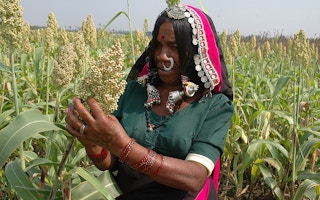Billions of dollars are being poured into insurance schemes to help farmers recover from worsening impacts of climate change, but as yet there is little evidence to show that such programmes work for the poorest, experts said on Thursday.
About 75 per cent of the world’s poorest people live in rural areas, and are particularly vulnerable to worsening drought, floods or other changes in climate, according to the U.N. International Fund for Agricultural Development (IFAD).
With climate change threatening to slow or roll back development advances in some countries, donors and aid agencies see insurance as one way to help farmers recover quickly, especially if it is offered alongside access to credit and training, the U.N. agency said.
But, as yet, there have been very few studies on the impact of insurance on small-scale farmers and their families - those most vulnerable to wild weather and with the fewest resources to cope.
“There’s a lack of evidence generally in agricultural insurance and in particular for vulnerable people, especially women and children,” said Bidisha Barooah, an evaluation specialist at the International Initiative for Impact Evaluation.
“
We have to ask ourselves if development is really succeeding if so many are living precariously. The only way to eliminate rural poverty and hunger is to address their root causes, which include inequality.
Cornelia Richter, vice president, U.N. International Fund for Agricultural Development
One reason is that many of them have not yet taken out insurance, Barooah said on the sidelines of a two-day conference on rural poverty at IFAD’s headquarters in Rome.
Often that is because they cannot afford the insurance premiums, or the products are not suited to their needs, Barooah told the Thomson Reuters Foundation.
Providers have not invested enough in determining “what farmers want”, she said.
Developing a good insurance product depends on having quality data on crops and weather - which are often lacking in developing countries, said Francesco Rispoli, a specialist in rural financial services at IFAD.
“This has a big impact on the quality of the product and the willingness of clients to pay for that product,” he said.
Even so, insurance can protect farmers’ assets and transfer risk away from individuals, businesses, microfinance institutions and governments, he said.
Most insurance schemes for poor farmers are subsidised by governments, and are designed to cover severe weather events that have a major impact but only occur every few years.
But “if a farmer is exposed to risks that can happen every year”, spending additional money on insurance for a climate shock that may not happen for several years becomes harder, Rispoli said.
“Precarious” development gains
U.N. agencies warned last year that global hunger levels had risen for the first time in more than a decade, mainly because of conflict and climate change.
Although developing countries have been getting richer - and the poor are benefiting from that - many of those living above the extreme poverty line of $1.90 a day are at risk of tipping below it, IFAD said.
“We have to ask ourselves if development is really succeeding if so many are living precariously,” said Cornelia Richter, IFAD’s vice president.
“The only way to eliminate rural poverty and hunger is to address their root causes, which include inequality,” she added.
Inequalities within developing countries have increased as those nations have become wealthier - and this is most stark in rural areas, Richter said.
Unni Karunakara, president of Médecins Sans Frontières Holland, a medical relief charity, said inequality is the result of deliberate economic and political choices made at the top.
“I believe it’s very difficult to impose development from the outside,” he said. “It’s a contract between citizens and their governments.”
The type of healthcare provided in a country, for example, depends on the type of government that has been elected by its people, Karunakara said.
In some cases, improving healthcare “is a political decision, not a technical fix”, he said.
Ultimately, “development will happen when the majority of people in a country have a say in the functioning of the country”, he added.
This story was published with permission from Thomson Reuters Foundation, the charitable arm of Thomson Reuters, that covers humanitarian news, women’s rights, trafficking, property rights, climate change and resilience. Visit http://news.trust.org.










